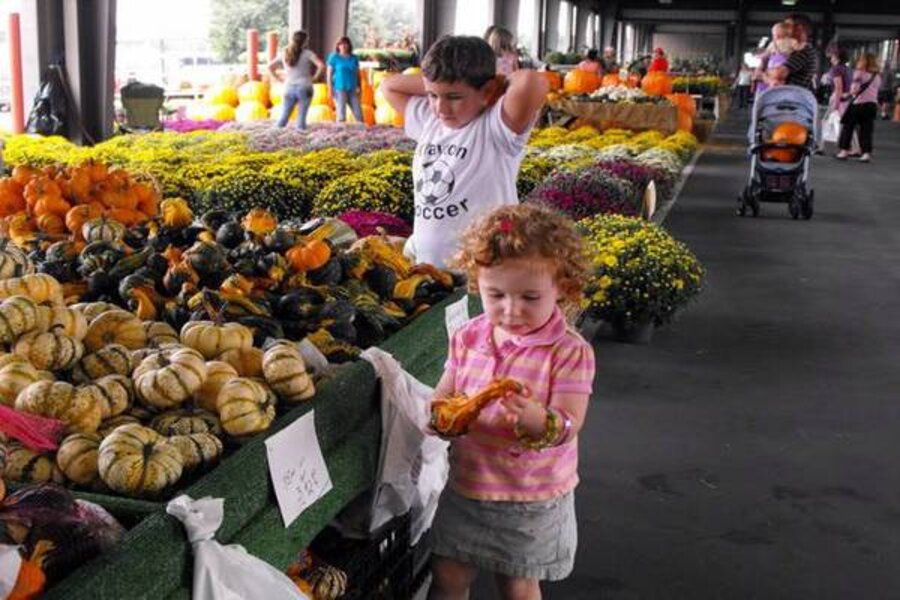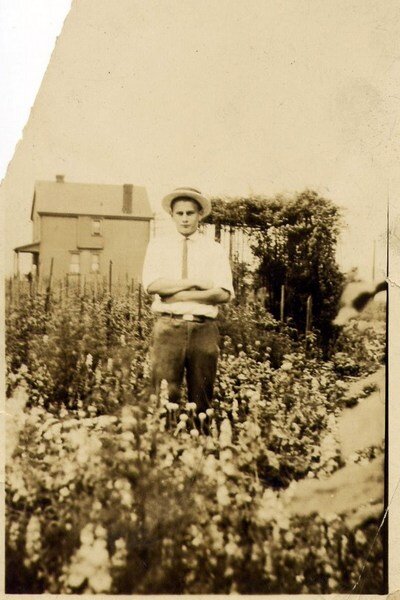A tradition of gardening runs in the family
Loading...
Today the hot topics in food and gardening are CSAs (community-supported agriculture), farmers' markets, slow food, the locavore movement, and organic anything.
I have to laugh because long before all of these things were your basic home gardeners. I come from a line of gardeners on both sides of the family -- my Italian grandparents who immigrated to this country and my German-Hungarian grandparents who made it here as well.
Gardens were necessities
My Italian grandfather, Rosario Scalise, planted a large garden in a lot next to the house where they lived with their eight children, one son-in-law, one grandchild, and Rosario’s father and mother. While part it may have been for pleasure, it really was necessary in order to feed his family.
He also built a bread oven, and people in the Italian neighborhood would bring their dough for baking and pay with what little money they had or traded bread for vegetables. A garden was important, for families, especially during the Depression, in order to just survive.
The German-Hungarian grandparents, Johann and Johanna, settled in a small community called Swissvale, just outside the city limits of Pittsburgh. There they built a house large enough for them, their four children and Johanna’s mother and brother. Because they had the only house on the block, they were able to grow a large amount of vegetables on the unoccupied lots for several years.
To help bring money in, my dad, Ernie, and his brother Charlie were sent out every day during harvest season to sell vegetables throughout the neighborhood. Everything they sold was organic since manure was about the only fertilizer and soil amendment available to them.
Not far away was old man Horrock’s farm. He was always called that even though he was a young man then. He just passed away a few years ago at the age of 103!
The farm's land has long since become lots for homes so I never really knew about the farm until one day I called the mother of a classmate because it was reunion time. Mrs. McGuire had lived in Swissvale all her life. She told me stories about my grandmother and how when she was a little girl, her mother would give her a paper bag and a dime to go to Horrock’s farm and fill up the bag with vegetables.
Imagine a bag of vegetables now for just a dime!
Fun for kids
My family lived with my dad’s mother. One year my grandmother fertilized her garden since no one else had done that. It turned out that my mother had done the same as well, as had my dad, since no one ever told anyone else of their fertilization. By the end of summer, the tomato plants looked more like Jack’s beanstalk. Because I was so little, they sent me into find the zucchini and tomatoes. It was like a jungle paradise for me.
At home in our garden, my grandmother grew tomatoes, beans, peppers, and carrots. When I would play outside, I used to sneak a carrot out of the ground, wash it off with water from the hose, and bite into a carrot that was so sweet, it was almost like candy instead of a vegetable. So addicting was that flavor, that to this day I eat only raw carrots for their crispness and sweetness.
Then, of course, there was the cherry tree with my swing on it. Every year my mother and grandmother fought the birds for the sour cherries so they could make pies. As I enjoyed the swing, the birds let their fondness for the berries drop on me. Amazingly, the tree is still alive today!
My dad ([see photo at left] passed away in 1966, but one of my earliest and fondest memories is going to the farmers' market with him. I can still remember being in awe of fresh blocks of Swiss cheese with their distinctive aroma and buying a bushel of sweet Country Gentleman, a silver shoe peg corn, and to my mind and mouth, one of the finest white corns ever grown.
At the end of summer the tomatoes from the garden became sauce, the carrots because something my grandmother called carrot sauce although she wouldn’t give up the recipe. There were pickled beets, jams, and jellies too.
Now I grow tomatoes, beans, onions, zucchini, peppers and beets. I buy corn at a farmer’s market. I make my tomato sauce, freeze the beans, make a lot of zucchini casserole or bread, salsa with the peppers, and onions for everything.
So I guess that makes me a bit of a locavore but really it’s always been just good homegrown food.
Here a recipe from my dear friend Antoinette Jucha, a Penn State Master Canner. Friends look at me like I’m crazy for saying I love pickled beets but this recipe is tops and will convert the non-believers, too.
Antoinette's Old-Fashioned Pickled Beets
3-1/2 pounds beets (2-1/2 inches in diameter)
2 or 3 onions, chopped or sliced to match the cut of the beets
2 cups sugar
1-1/2 cups white vinegar (5 percent acidity)
1/2 cup water
Pickling salt
Trim the tops off the beets, leaving 1 inch of the stems. Wash the beets. Place them in a pan, cover with boiling water, and simmer until they are tender. Discard water. Cool beets slightly and remove the skins. Cut the beets into chunks or slices, or leaves small ones whole. Mix the onions with the beets.
In a different saucepan, dissolve the sugar in the vinegar and water; bring to a boil. Boil until it is nearly a syrup.
Pack the beets in hot glass canning jars to within a half-inch of the top. Add 1/2 teaspoon pickling salt to each pint jar or 1 teaspoon pickling salt to each quart jar.Then cover with the boiling syrup, leaving 1/2-inch of head space.
Put the lids on the jars and process in a boiling water bath for 15 minutes for pint jars and 25 minutes for quart jars. (Click here to learn more about how to can food.)
-----
Denise Schreiber is the Mrs. Know It All of “The Organic Gardeners” on KDKA Radio and “Ask the Expert” for Pennsylvania Gardener magazine. Her new book is "Eat Your Roses." Click here to read her previous articles at Diggin' It.






